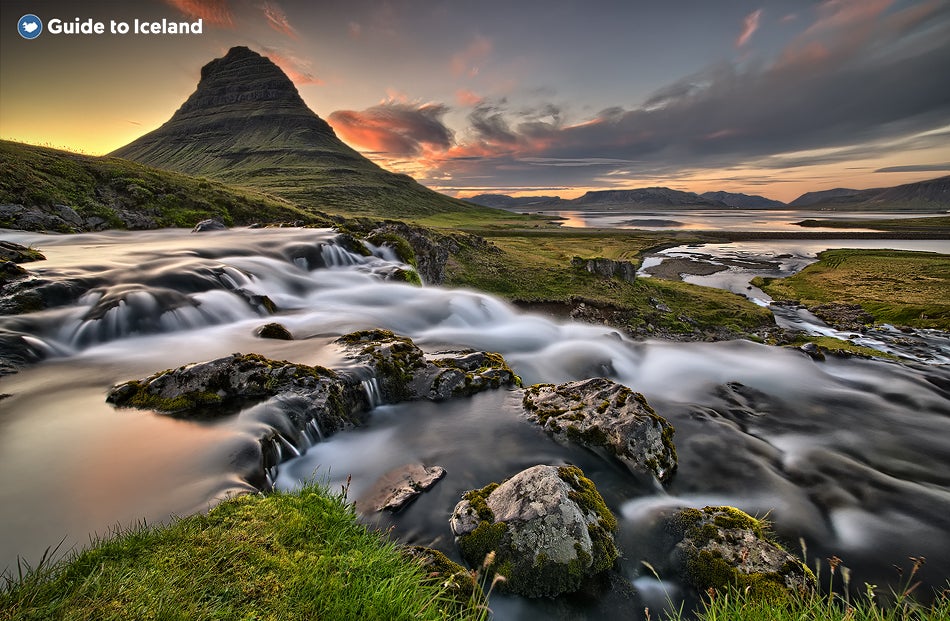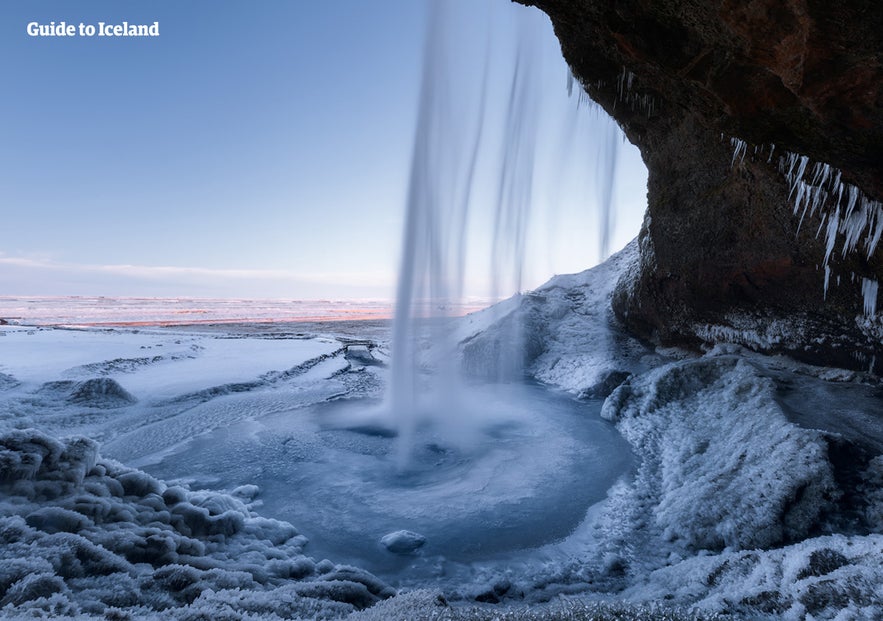
March in Iceland is a time of transition, as the dark of winter starts to give way to the bright spring days. The days are getting longer, making it easier to explore the country by renting a car. You'll be able to fit more activities into the itinerary for your self-drive tour while still being able to enjoy beautiful sunsets, with a chance of northern lights spotting during the still dark nights!
This month is ideal for those looking to experience Iceland’s natural beauty with fewer crowds and at a more relaxed pace. As March is also part of the low season, you'll likely find great deals for your accommodation in Iceland and more affordable flights!
Why You Can Trust Our Content
Guide to Iceland is the most trusted travel platform in Iceland, helping millions of visitors each year. All our content is written and reviewed by local experts who are deeply familiar with Iceland. You can count on us for accurate, up-to-date, and trustworthy travel advice.
With the potential to witness natural wonders like the northern lights, driving in Iceland in March is not just about getting between destinations but a whole adventure in itself. Learn all you need to know about navigating the country's roads during this dynamic time of year with this helpful guide to driving in Iceland in March.
- See more with the Ultimate Guide to Iceland in March
- Learn more about Driving in Iceland at all times of the year
Visiting Iceland in March

March is a beautiful time to visit Iceland, a month characterized by the dynamic interplay of winter's end and the onset of spring. This is the perfect time for those looking for tranquility, as March is less crowded compared to peak tourist seasons.
When visiting Iceland in March, you'll be able to participate in amazing winter activities, such as ice cave tours and glacier explorations. Most sights along the South Coast and Snaefellsnes peninsula are generally easy to access, but some regions will be inaccessible, like the dramatic Highlands and the Westfjords.
Attractions such as the Skogafoss and Seljalandsfoss waterfalls are beautifully draped with frost, and the dark nights provide good conditions for northern lights tours. The frosty air is also a perfect companion for a soak in the Blue Lagoon, Sky Lagoon, or another geothermal spa!
As long as you keep your plans flexible and don't take unnecessary risks when it comes to facing the ever-changing weather, you can have a truly magical visit to Iceland in March!
Driving in March in Iceland
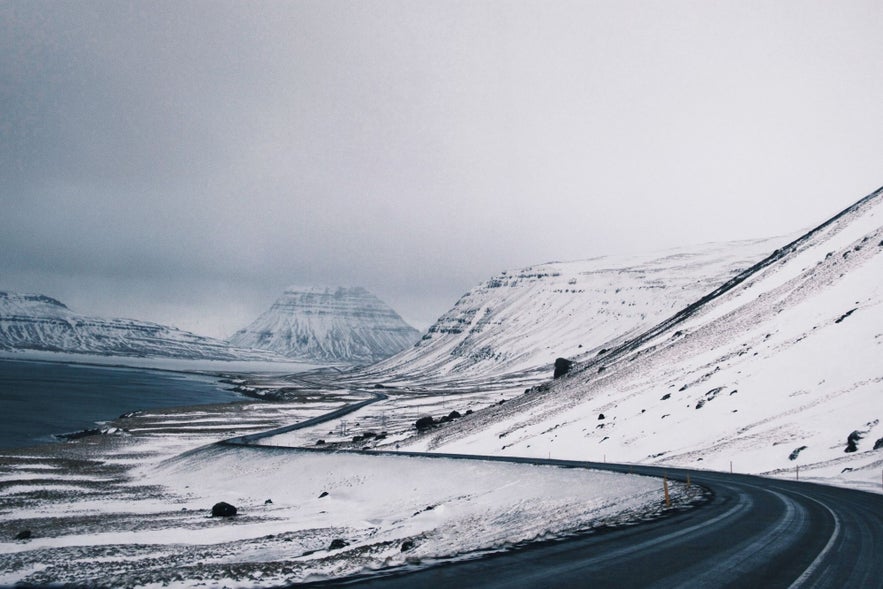 With the remains of winter lingering and spring on the way, March brings different challenges for drivers navigating Icelandic roads. Here's all you need to know about driving in March in Iceland.
With the remains of winter lingering and spring on the way, March brings different challenges for drivers navigating Icelandic roads. Here's all you need to know about driving in March in Iceland.
The Icelandic Roads in March
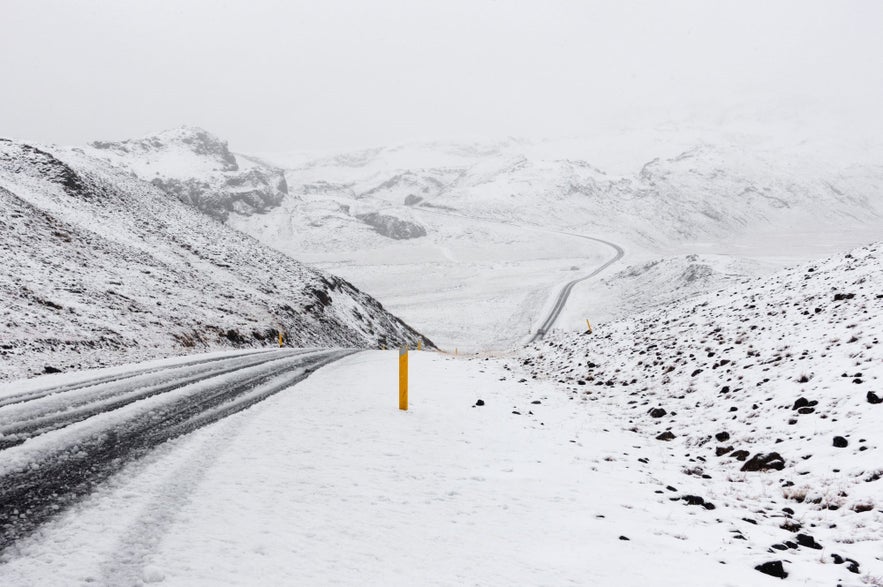
When visiting Iceland in March, you must be aware of the country’s diverse road conditions. The weather changes frequently, and this month sees a mix of clear, snowy, and icy roads. You may also encounter high winds, adding another driving challenge.
Main roads like the Ring Road are generally well-maintained, but weather changes can be sudden and challenging, resulting in temporary closures. Secondary roads, especially in rural areas, likely have more snow and ice, making access difficult, if not impossible. It’s important to regularly check the Icelandic weather forecast and the local road conditions.
Make sure to keep your travel plans flexible to account for weather changes, and if you're not comfortable taking on the challenge of snowy and icy roads, consider opting for guided tours of Iceland instead.
- Plan your trip: What To Pack for Iceland for All Seasons
- See more: The Top 10 Best Tours in Iceland: Popular and Unique Excursions
The Weather of Iceland in March
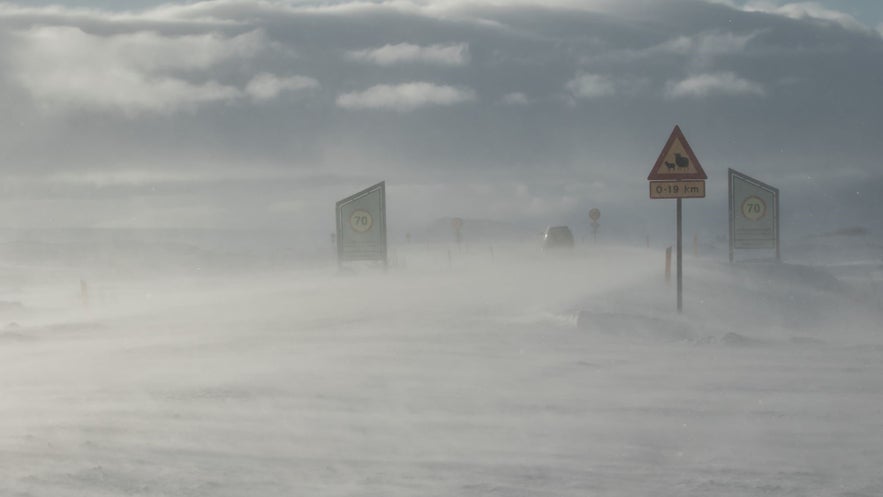
In March, the weather in Iceland can be vastly different from day to day. Temperatures typically range from 32°F to 41°F (0°C to 5°C), but can fluctuate. This month can still bring winter-like conditions, including snowfall and icy winds, particularly in the northern and inland regions.
However, milder days with some sunshine and less severe winds are also common, especially in coastal areas such as the Capital Region and along the South Coast. Make sure to check the Icelandic weather forecast regularly along with the road conditions.
- See more: Iceland's Weather, Climate, and Temperature Year-Round
- See also: Top 9 Things to Do During Bad Weather in Iceland
Iceland Daylight Hours in March
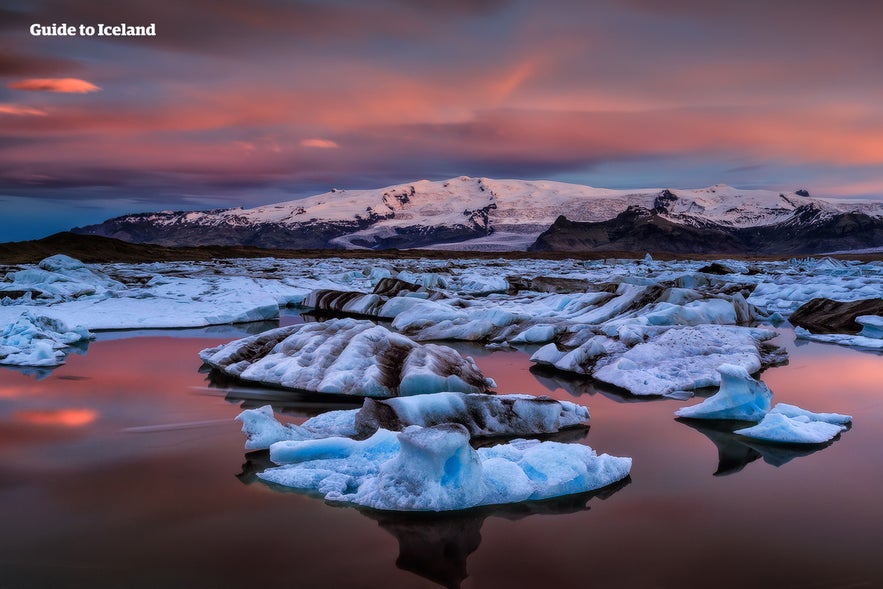 In March, Iceland experiences a significant increase in daylight hours, a welcome change after the long, dark winter. The month begins with about 10 hours of daylight and, by the end, over 13 hours, marking a noticeable shift towards spring.
In March, Iceland experiences a significant increase in daylight hours, a welcome change after the long, dark winter. The month begins with about 10 hours of daylight and, by the end, over 13 hours, marking a noticeable shift towards spring.
This extended daylight is fantastic for travelers and locals alike as it allows for more time for outdoor activities and exploration. Since the nights are still dark, you'll be able to enjoy beautiful sunsets during your travels and may even spot the elusive northern lights!
Renting a Car in Iceland in March
It's important to consider your travel itinerary when choosing the perfect rental car for your March trip to Iceland. Here are the best options for your visit!
Best Rental Car for a Road Trip in Iceland
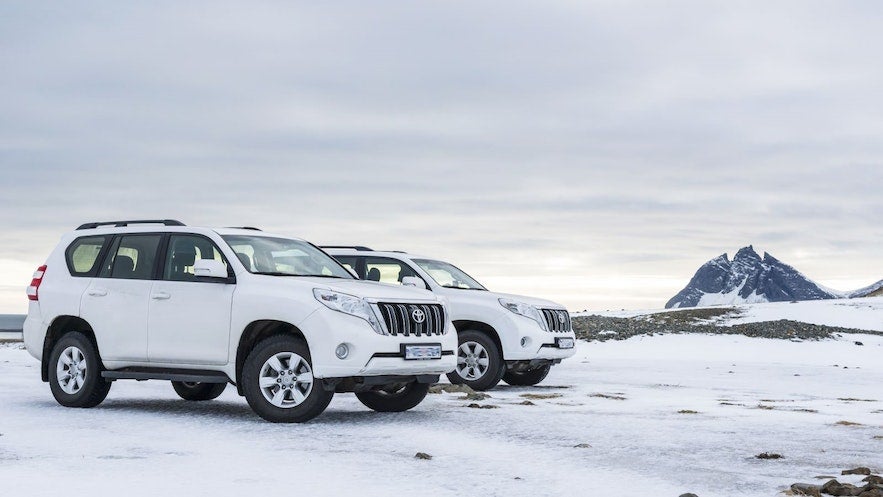 Choosing the best rental car for a March road trip in Iceland depends heavily on the routes you plan to take and the weather conditions during your visit. Given March's unpredictable weather, renting a four-wheel drive vehicle is recommended when traveling outside Reykjavik. This type of vehicle provides better traction and stability on icy and snowy roads, which are common during this transitional month.
Choosing the best rental car for a March road trip in Iceland depends heavily on the routes you plan to take and the weather conditions during your visit. Given March's unpredictable weather, renting a four-wheel drive vehicle is recommended when traveling outside Reykjavik. This type of vehicle provides better traction and stability on icy and snowy roads, which are common during this transitional month.
Jeeps or SUVs are ideal, as they offer higher ground clearance, which can be beneficial for navigating through snow-covered roads or rough terrain. Additionally, these vehicles typically come with features like heated seats and even a heated steering wheel, a welcome comfort during Iceland's chilly March weather!
Throughout the year, the Dacia Duster and Suzuki Jimny are some of the most popular rental cars in Iceland. They will generally serve you well during a March visit to areas like the South Coast and the Snaefellsnes peninsula. If you're planning to visit North Iceland or other regions known for heavy snow, it's better to go for a larger vehicle, such as a Toyota Land Cruiser.
Make sure to assess your travel itinerary and compare options on Iceland's largest rental car marketplace to find the right rental car for your Iceland trip.
- Learn more with the Best Guide to Rental Car Sizes in Iceland
Best Rental Car for Reykjavik in March

You won't need a 4x4 if you're planning to stay within Reykjavik during your time in Iceland, but you may still prefer a larger car, like an SUV. It will provide the freedom of doing day trips from Reykjavik without much worry!
You may be able to go for a small rental car, depending on the weather, but if you're not used to it, heavy snow and ice can be hard to tackle in small cars, even for locals. If conditions allow, however, these vehicles are easier to navigate through Reykjavik's streets and are far more fuel-efficient, which can be a cost-saving advantage.
Tips for Driving in Iceland in March
 Driving in a new country can be challenging, especially during a month when conditions can change dramatically. Here are some tips to keep in mind for driving in Iceland in March.
Driving in a new country can be challenging, especially during a month when conditions can change dramatically. Here are some tips to keep in mind for driving in Iceland in March.
-
Check road conditions daily: Icelandic weather can be unpredictable, especially in March. Make it a habit to check the road conditions and weather forecasts every day before setting out. Make sure to heed weather warnings!
-
Winter tires are a must: Your rental car should be equipped with winter tires between November 1st to April 14th, so make sure to check your rental vehicle's tires on pickup. This is crucial for safe driving on icy or snowy roads.
-
Drive according to conditions: Even if you're used to driving in winter conditions, remember that Iceland's weather can change rapidly. Adjust your speed accordingly and maintain a safe distance from the vehicle in front of you.
-
Be prepared for all types of roads: While main roads are usually well-maintained, secondary roads can be challenging, particularly in rural areas. Be prepared for narrow, winding roads, and always keep an eye out for sudden turns or dips.
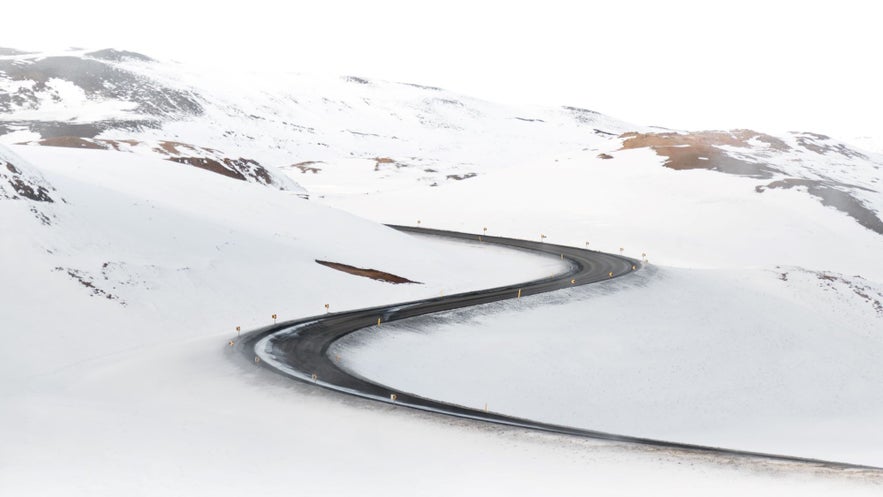
-
Keep an eye on fuel: In rural areas, gas stations can be few and far between. It's a good practice to keep your tank at least half full.
-
Headlights on: In Iceland, it’s mandatory to have your headlights on at all times, day and night. This helps with visibility, especially during overcast or snowy conditions when it can also be hard for other vehicles to spot you!
-
Emergency kit: Keep an emergency kit in your car. This should include items like a first-aid kit, warm blankets, snacks, water, and a flashlight.
-
Do not off-road: It's illegal to drive off-road in Iceland, as it can damage the fragile environment. It can be hard to see the right path in snowy conditions, so stick to clear and marked roads.
-
Know what to do in an emergency: In case of an emergency, dial 112, Iceland's emergency number. It's also good to submit a travel plan on the SafeTravel website. Remember to inform your rental company of any incidents or accidents.
Remember, safety is paramount. Iceland's landscapes are beautiful but can be challenging, especially in March. Drive with caution and enjoy your journey!
FAQ's for Driving in Iceland in March
 Here you'll find answers to some of the most frequently asked questions about driving in Iceland in March.
Here you'll find answers to some of the most frequently asked questions about driving in Iceland in March.
-
Is it necessary to have an International Driving Permit to drive in Iceland? Generally, if your license is written in the Latin alphabet and has a photo, you don't need an International Driving Permit. Otherwise, you'll need to apply for one.
-
Can I drive the entire Ring Road in March? Yes, but be prepared for varied conditions. North and East Iceland will have challenging winter-like conditions, so only go if you have a good 4x4 vehicle and are experienced with driving in the snow. Areas like the South Coast and the Snaefellsnes peninsula are generally easier to access.
-
What are the conditions of mountain passes in March? Mountain passes can be tricky in March with lingering snow and ice. Always check their status beforehand and avoid if conditions are poor. It's common to see temporary road closures due to strong winds or snow.
-
What should I do if I encounter a snowstorm while driving? Reduce speed, use your headlights, and if visibility is very poor, find a safe place to pull over until conditions improve. Always heed weather warnings and don't try to travel in dangerous conditions. In an emergency, call 112 for help.
-
How do I handle steep inclines or declines, especially in slippery conditions? Use a low gear and avoid sudden acceleration or braking. Keep a steady, moderate speed.
-
What are common mistakes visitors make when driving in Iceland? Speeding, underestimating driving times, not preparing for weather changes, and stopping in the middle of the road for photos are common mistakes to avoid.
Summary of Driving in Iceland in March
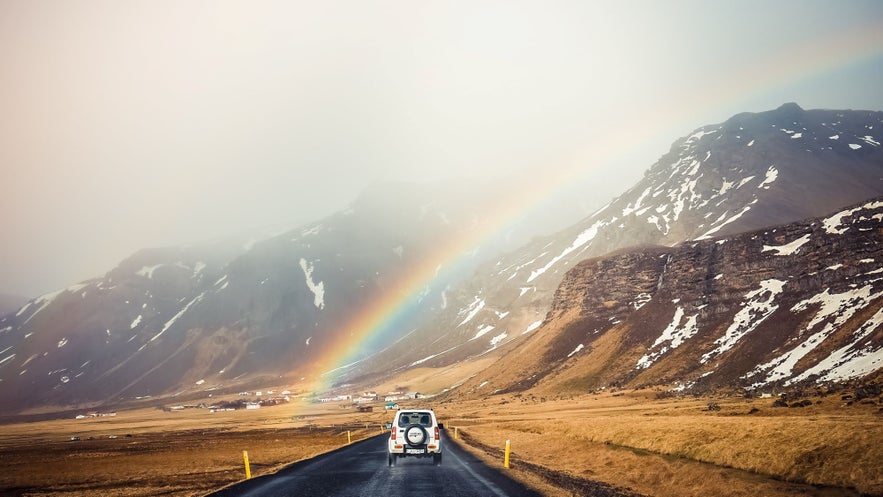 Your road trip in Iceland in March is set to be a remarkable journey filled with both challenges and delights. Equip yourself with the right vehicle, stay updated on weather and road conditions, and plan your route with care. Remember, the weather can be unpredictable, so flexibility is essential!
Your road trip in Iceland in March is set to be a remarkable journey filled with both challenges and delights. Equip yourself with the right vehicle, stay updated on weather and road conditions, and plan your route with care. Remember, the weather can be unpredictable, so flexibility is essential!
Embrace the quieter tourist season to explore Iceland's unique landscapes and cultural experiences at a more relaxed pace. With the right mindset and these tips in hand, your Iceland road trip in March is sure to be an unforgettable experience. Drive safe, respect nature, and embrace the unique charm that Iceland has to offer during this magical time of the year!
Are you planning to visit Iceland in March? Which locations would you like to visit? Have you driven in Iceland before? Share your thoughts and experience in the comments below!



